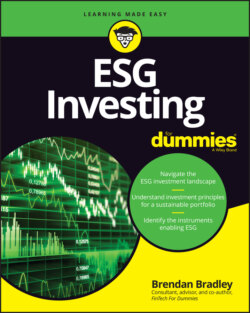Читать книгу ESG Investing For Dummies - Brendan Bradley - Страница 63
Clean and green: Energy efficiency
ОглавлениеEnergy efficiency is most often associated with clean technology companies where green energy businesses are looking to decrease hydrocarbon-sourced energy consumption by displacing it with clean energy sources, or to integrate systems to improve energy usage. Because of the numerous alternatives to working toward and investing in energy efficiency, it’s challenging to classify and define companies based on fields or themes, as some of the world’s historic hydrocarbon energy companies are investing heavily in transitioning away from coal, oil, and gas.
The definitions of how firms are categorized and compared by industry and sector by established data/index providers such as Morgan Stanley Capital International (MSCI) or Financial Times Stock Exchange (FTSE) Russell can be useful for investors. Visit www.msci.com/gics and www.ftserussell.com/data/industry-classification-benchmark-icb.
The International Energy Agency (IEA; visit www.iea.org/) is the global authority for energy efficiency data, analysis, and policy advice. They help governments realize the huge potential of energy efficiency, guiding them on growing, implementing, and quantifying the impacts of policies to alleviate climate change, improve energy security, and develop economies while delivering environmental and social benefits. They track global policy progress in over 200 countries, regions, and states, and global investment in energy efficiency as published in the World Energy Investment report. As of 2016, energy efficiency investment represented 13.6 percent of the US$1.7 trillion invested across the entire energy market.
Such investments are directed into different fields, with approximately 58 percent focused on buildings, 26 percent allocated to transport, and 16 percent assigned to industry. The types of services or infrastructure projects benefitting from alternative fuels and renewable energy include generation, transmission, and distribution of electricity from renewable sources such as wind, solar, geothermal, biomass, wave, and tidal (more information on these investment themes is found in Chapter 10).
